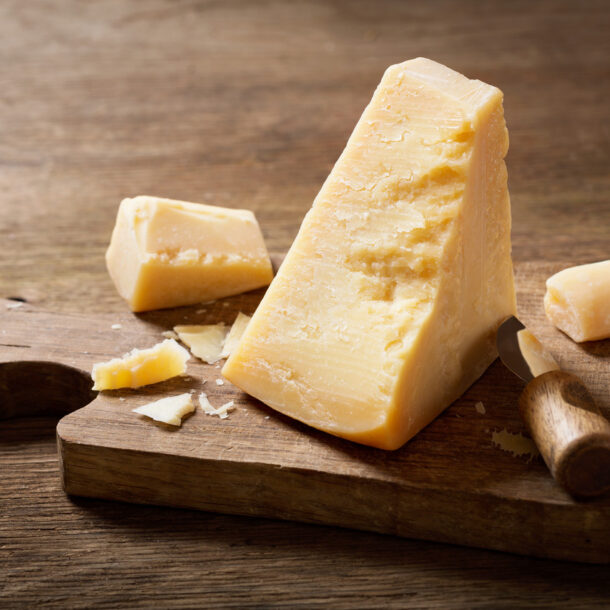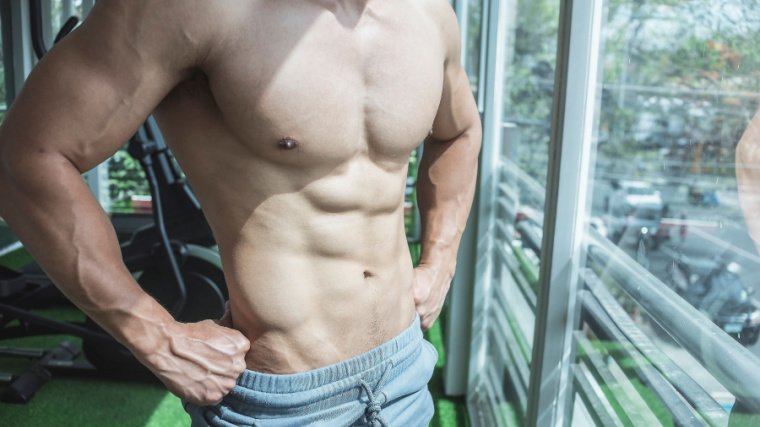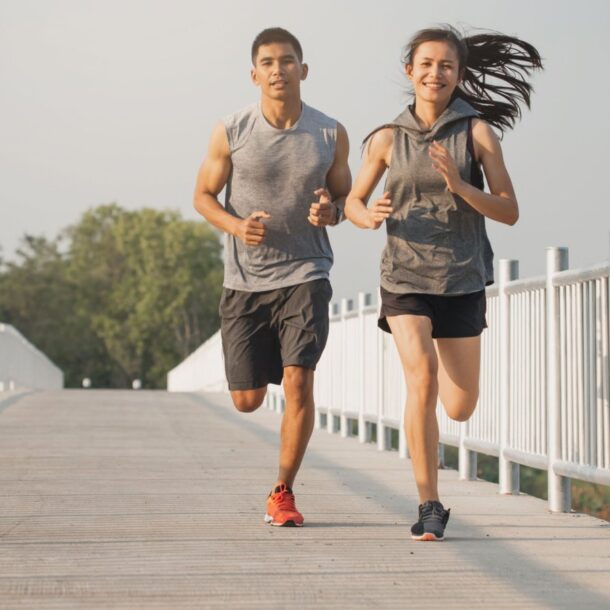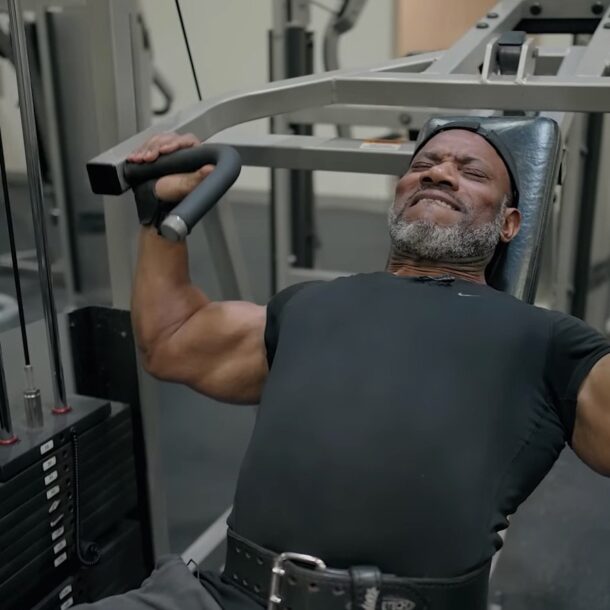
8 Bodybuilding Poses Explained by a Natural Pro Bodybuilder – Breaking Muscle
So, you enjoy training like a bodybuilder. Excellent. But have you ever stepped on stage and competed? If not, chances are you’re unfamiliar with bodybuilding posing — the specific way bodybuilders are required to display their muscles for comparison.
Sure, you might’ve taken a stab at some posing in between sets or after workouts, and you might even know the names of some of the most popular bodybuilding poses. But if you’ve never actually competed, you might not know exactly what all eight mandatory poses are, let alone how to perform them in ways that show off all the hard work you put into muscle-building workouts and a strict fat loss diet.

When it’s time for the big showdown on stage, posing skill can make or break your physique. The mandatory bodybuilding poses are the positions that you must perform in bodybuilding competitions, as expected by judges. Even if you don’t ever plan on stepping on stage, here’s an explanation of each pose so you can understand what bodybuilders are actually doing, or maybe brush up in time for your next set of progress pics.
Bodybuilding Poses
- Front Double Biceps
- Back Double Biceps
- Front Lat Spread
- Rear Lat Spread
- Side Chest
- Side Triceps
- Abs and Thighs
- Most Muscular
Front Double Biceps Pose
The front double biceps pose is done while facing head-on toward the judges and audience. This iconic pose shows the entire front side of the body. It is one of the poses that, if done effectively, can make you appear bigger and wider than you actually are.
Aside from the most muscular pose, the front double biceps is possibly one of the most popular and most recognizable poses of all time. It’s done by bodybuilders, gymrats, athletes, and fitness fanatics when trying to show off their physiques. It’s even attempted by non-lifters and small children when they want to “make a muscle” for a picture.
How To Do It
Raise your upper arms out to your sides, so that your arms are slightly above horizontal. Aim your elbows roughly 10 to 20 degrees in front of you. Flex your biceps and forearms. Flex your serratus and, while doing so, spread your lats as wide as you possibly can. Envision your lats wrapped around your torso.
Draw your abdomen inward, as if you are trying to have your navel touch your lower back. Turn your feet out at approximately 45-degree angles. Keep your knees slightly bent while maintaining tension in your quadriceps. With all of your body in proper positions, try to stand as tall as possible, as if you are increasing your height by lengthening your spine.
There is a tendency with this pose for some to aggressively flex their abs, pecs, and lats. What this actually does is make you appear shorter, narrower, and tense in a pose that is intended to show off width and poise. Other than your quads, forearms and biceps, no other muscles need to be flexed.
What It Shows
This pose primarily highlights development in your biceps, forearms, lats, serratus, and quadriceps. To a lesser extent, your pec development is on display. It also shows the degree of aesthetics and your degree of symmetry.
Back Double Biceps Pose
The back double biceps pose is one of the first comparisons to showcase the muscles you don’t often see for yourself — the musculature on the back half of your body. Like the front double biceps pose, if done properly, the back double biceps can give the illusion of appearing bigger and wider than you are.
The back double biceps pose requires a strong mind-muscle connection, as well as the patience and coordination needed to focus on muscles you can’t see contracting. Dedicated practice is crucial for dialing-in correct technique.
How to Do It
Facing away from the audience, position your upper arms in the same way you would in the front double biceps pose — slightly above horizontal and aimed roughly 10 to 20-degrees toward the front. Flex your biceps, forearms, and serratus. Envision your lats wrapped around your torso. All the same cues so far, until it’s time for your back to shine.
Slightly round your upper back. Tense your lats and upper back, but do not draw your elbows back. Turn one foot 45-degrees outward with your knee slightly bent. Step back with your other foot and turn it out 45-degrees while putting tension on the floor, as if you were trying to screw the ball of your foot into the floor in a clockwise motion.
Finally, flex your hamstrings and glutes. When done properly, this pose should have you feeling as if you are sitting back on a base created by your highly-tensed lower body.
What It Shows
This pose shows the development of all three heads of your deltoid, your triceps and biceps, forearms, upper back, lats, glutes, hamstrings, and calves. It also reveals your symmetry and aesthetics.
Front Lat Spread Pose
The front lat spread shows all the musculature on the front of your body. Like the front and back double biceps poses, this is intended to show off your aesthetics, as well as your v-taper. If you’ve spent time building a well-developed back, the front lat spread will let you highlight that muscularity without even turning around.
The front lat spread is so potentially impressive that Superman’s epic signature pose is, essentially, a modified front lat spread.
How to Do it
Face forward with your feet turned out at 45-degree angles. Flex your quads and put your hands on your waist. Draw your elbows forward and, as you do so, apply pressure into your waist to spread your lats as much as possible while flexing your serratus.
Flex your pecs as much as possible in this position. Remember to stand tall, as if you are trying to elongate your spine. Draw your navel inward, as if you are trying to connect your navel to your lower back, while keeping your midsection tight but not flexed. Envision yourself showing as much of your body as possible for a large presentation.
What It Shows
The front lat spread shows the development of your lats, pecs, arms, shoulders, and quads. It may not necessarily be considered a “finesse” pose, but can be used to highlight extreme muscularity and volume in a championship physique.
Rear Lat Spread Pose
One phrase often passed along regarding the sport of bodybuilding is that, “contests are won from the back.” While overall muscularity and symmetry are certainly important criteria, the rear lat spread has specifically been a trademark pose for some of the best-built bodybuilders of all time.
Two-time Mr. Olympia Franco Columbu, six-time Mr. O Dorian Yates, and eight-time champion Ronnie Coleman are all closely associated with a dominant rear lat spread.
How to Do It
Face away and set up like the previous back pose: turn one foot 45-degrees outward with a slightly bent knee. Step back with your other foot and turn it 45-degrees out and put tension on the floor. Imagine screwing the ball of your foot into the ground. Flex your hamstrings and glutes.
Put your hands at the sides of your waist and apply pressure. At the same time, round your mid and upper back, and flex your lats to spread them as much as possible. Just like the back double biceps, when this is properly done, your lower body tension should make it feel like you’re “sitting” on a stable base.
What It Shows
The rear lat spread showcases the development of your upper back, lats, glutes, hamstrings, and calves. Even though it’s called a “lat spread,” don’t underestimate the importance of featuring your lower body during the pose. Neglecting to recruit your glutes, hamstrings, and calves means you’re forgetting to present 50% of your body to the judges. Good luck winning points with that approach.
Side Chest Pose
The side chest pose, as its name implies, calls attention to your body’s musculature from the side. It is the pose many impressionable lifters saw Arnold Schwarzenegger perform for many of his most circulated photographs, showing off his massive upper body in his prime.
The side chest pose, for some, may feel awkward or unfamiliar because it’s “sideways” rather than front-facing or straight from the back. Take the time to get comfortable with the pose because, when it’s done right, it can be one of the most eye-catching displays of almost your entire physique.
How to Do It
Stand with your dominant side facing the audience, judges, mirror, or camera set on selfie-mode. Tightly pack your dominant arm against your side, flex your bicep, and extend your wrist. Pack your other arm tightly against your opposite side while grabbing the wrist of your dominant arm.
Slightly bend the knee of your non-dominant side. Bend the knee of your dominant leg and pack it tightly against your other leg. You want your legs together. Rise onto the ball of your dominant foot, flex your quadriceps, and apply pressure down into the floor.
Do not flex the hamstring of your dominant leg — it should be pressing against your other leg to show its fullness. Finally, with your entire body packed with tension and your shoulders squared, twist your torso toward the viewer.
What It Shows
The side chest pose shows the development of your deltoids, traps, chest, biceps, triceps, forearms, quads, and hamstrings. The only body parts missing from this impressive pose are your back and abs, so it’s an amazing opportunity to display what you’ve built.
Side Triceps Pose
The side triceps, like the side chest pose, spotlights your musculature of the body from the side, but with more added exposure for your midsection.
Because the side triceps pose “opens up” your physique with your arms in a unique position, it’s an opportunity to highlight not only your triceps, but your abs, chest, and legs.
How to Do It
Set your lower body exactly the same as the side chest pose – your legs bent and packed together, up on the ball of your front foot, driving your front foot into the ground while contracting your quads.
Straighten your dominant arm by your side and tightly pack against your side with your triceps flexed. Reach around your back with your other arm to grab the wrist of your dominant arm.
Apply pressure with your dominant arm against the tension created by your other arm grabbing your wrist, as if you were performing an isometric lateral raise — try “raising” your dominant arm while preventing the movement with your opposing arm.
Finally, with your whole body tensed and your abdomen and obliques flexed, twist your body toward whoever or whatever you are posing for.
What It Shows
The side triceps pose shows the development of your triceps, pecs, abs, obliques, deltoids, quads, and hamstrings. Be sure to incorporate a twist to reveal your entire physique. Staying too narrow will limit your presentation and prevent a complete assessment of your physique.
Abs and Thighs Pose
The abs and thighs pose primarily shows the development of your quadriceps and midsection. Because your abs are on display front and center, this pose also shows one’s degree of leanness (or lack thereof).
Even though it’s specifically in the name, don’t forget to incorporate your lower body into the pose. Some bodybuilders get so focused on displaying their abdominal and oblique development, they miss the chance to show off their leg development.
How to Do It
Plant one leg firmly with the foot turned out at roughly a 45-degree angle. Take one step forward with your other leg and set your foot on the food with your ankle extended (toe pointed forward).
Put your hands behind the back of your head with your elbows in the air. Round your entire back. Flex your abs, serratus, and quads as hard as possible. Don’t overemphasize flexing your arms or lats, which will take focus away from the primary featured muscles.
What It Shows
This pose shows the development of your abs, lats, serratus, and quads. Your serratus, in particular, are prominently displayed due to the overhead arm position. The transition from sculpted serratus muscles to well-defined abdominals and obliques can leave a striking impression on judges.
Most Muscular Pose
The most muscular pose, sometimes called the crab pose, shows the majority of muscle on the front of your body, especially your arms, shoulders, upper back, and traps. Because this pose requires a high-degree of tension throughout your entire body, it is also the one that shows off your total package.
It’s likely the most demanding of the poses due to the many muscles involved, but it’s also usually the one pose that fans react to with the most enthusiasm. Like the front double biceps, the most muscular is another pose that everyone from recreational lifters to bodybuilders to mainstream pro athletes uses to “look jacked.”
How To Do It
Stand with your legs fairly close together and your feet turned out at 45-degree angles. With the hand that feels most natural, grab the wrist of your other arm and position both hands in front of your lower abs.
Keep your shoulders down and round your upper back to make your traps “pop.” Finally, flex your pecs, abs, biceps, forearms, abs, and quads as hard as possible. You should feel immense pressure throughout your entire body because you’re essentially flexing from head-to-toe.
What It Shows
This pose shows the development of the traps, shoulders, arms, pecs, abs, and quads. The most muscular is sometimes considered “gratuitous” or meant to rile up the audience rather than display your physique, but don’t underestimate it. This dramatic pose is a chance to highlight both upper and lower body muscular development.
Ready to Strike a Pose
Like anything else, posing is perfected with practice.You can practice posing immediately after workouts, to learn how to display pumped up muscles, or some time after training for a more fresh posing session. If you do aim to compete, posing practice must be part of your preparation and it should become more frequent as the contest gets closer.
Don’t underestimate how demanding posing can be — you’ll be “pleasantly” surprised at how tough it is once you learn to flex the correct muscles in unison. And don’t overlook how much your physique can suffer if it’s presented with poor posing. Do yourself a favor. If you’re going to pose, on stage or in pictures, apply the right technique to make the most out of it.
Featured Image: @masmacros / Instagram
Related Articles
2023 Bodyfender @ All Rights Reserved


